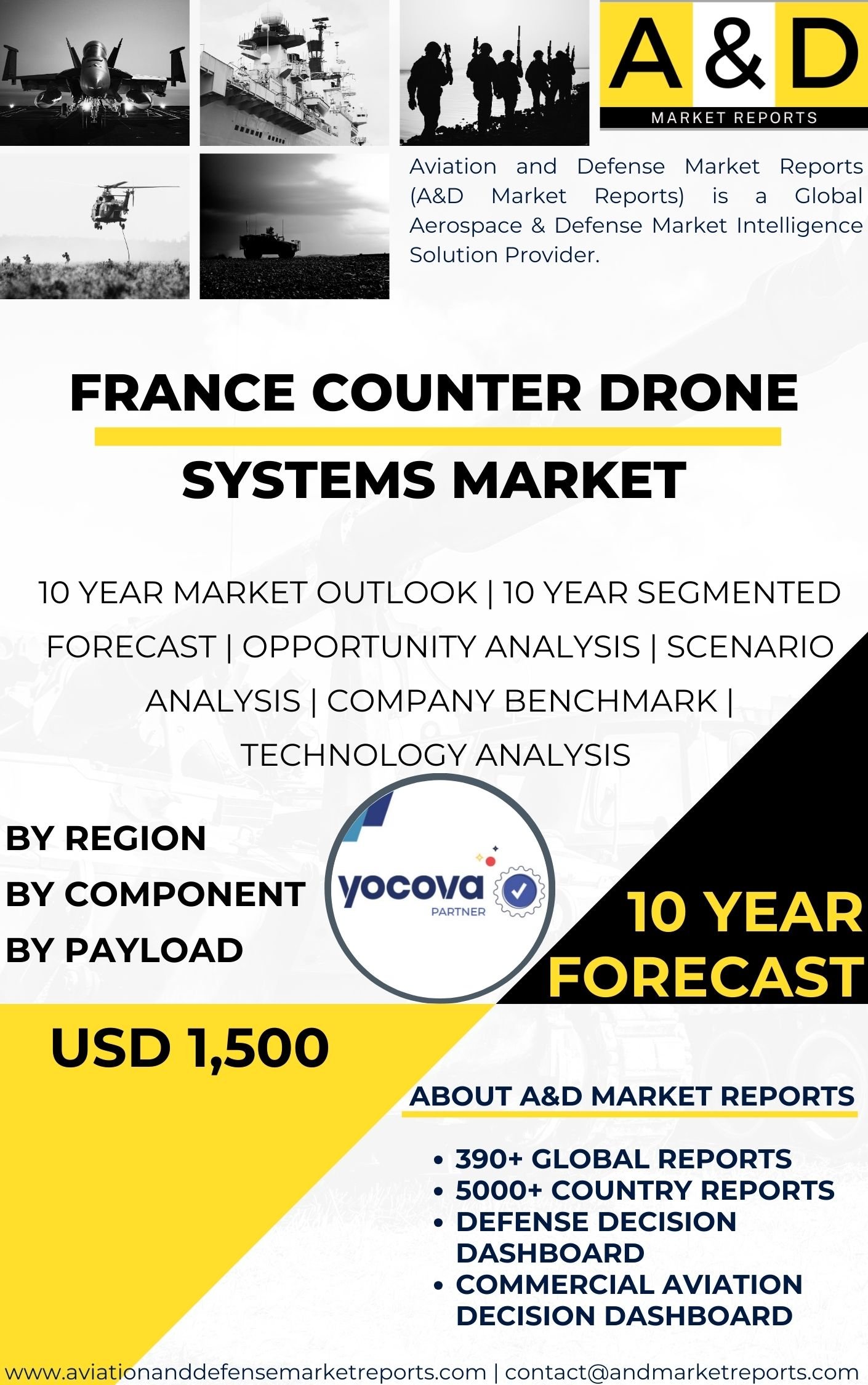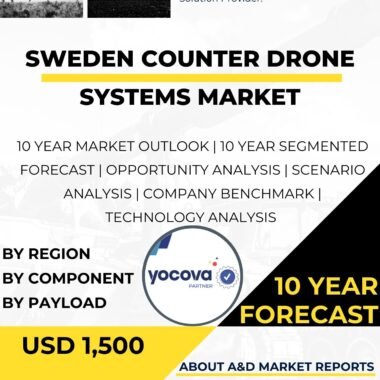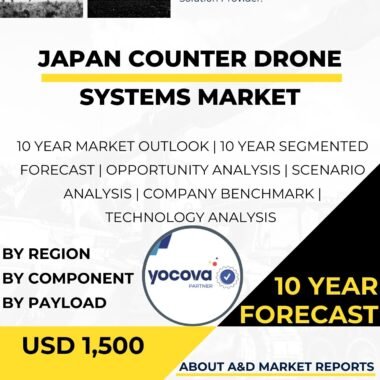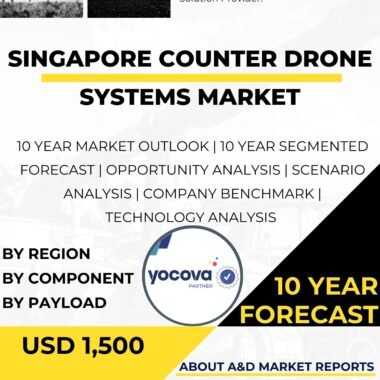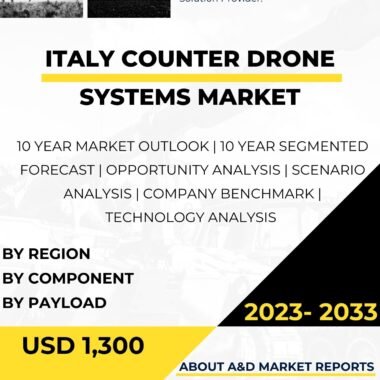Description
The counter-drone systems market in France is a critical and rapidly expanding segment of the country’s defense industry, driven by the growing threats posed by unmanned aerial vehicles (UAVs) or drones. As a major player in the global arms market, France has been actively involved in the research, development, and production of advanced counter-drone technologies to protect critical infrastructure, military assets, and public safety. This essay provides an overview of France’s counter-drone systems market, focusing on its significance, key players, technology advancements, applications, international collaborations, policy considerations, and future prospects.
The significance of France’s counter-drone systems market lies in its role as a crucial defense against the proliferation of drones for malicious purposes. Drones, once primarily used for civilian and recreational purposes, have become a potential security risk due to their ability to conduct illicit activities, such as unauthorized surveillance, smuggling, or carrying out terrorist attacks. Counter-drone systems aim to detect, track, and neutralize these unauthorized drones to protect sensitive areas and safeguard national security.
Key players in France’s counter-drone systems market include government entities, defense companies, and research institutions. The French Ministry of Armed Forces, through its procurement agency, the Direction G?n?rale de l’Armement (DGA), plays a central role in overseeing the acquisition and development of counter-drone technologies for the country’s defense forces. Additionally, private defense companies like Thales, MBDA France, and Safran Electronics & Defense have been instrumental in the research, development, and production of advanced counter-drone systems.
Technological advancements have been pivotal in shaping the growth of France’s counter-drone systems market. Innovations in radar, electro-optical sensors, radio frequency (RF) detectors, and electronic countermeasures have significantly improved the capabilities of counter-drone systems. Advanced sensors can detect and track drones even in challenging environments, while electronic countermeasures disrupt the communication links between the drone and its operator, rendering it ineffective.
The applications of counter-drone systems in France are diverse and critical for various sectors. One of the primary applications is in protecting critical infrastructure, such as airports, power plants, and government buildings. Counter-drone systems deployed at these locations provide early warning of unauthorized drone activity and enable rapid response measures.
Furthermore, counter-drone systems are essential for enhancing security during major events, including sports events, concerts, and political gatherings. By ensuring drone-free zones, these systems protect attendees and prevent potential disruptions.
In addition to their security applications, counter-drone systems are also used in the defense sector to protect military bases and assets. By countering hostile drones, these systems help maintain operational readiness and safeguard sensitive information.
France’s counter-drone systems market has also benefited from strategic international collaborations. The country has engaged in partnerships with other nations and defense industries to share technological expertise, collaborate on joint research and development programs, and facilitate the exchange of knowledge and resources. Such collaborations have strengthened France’s defense relationships and expanded the market reach for its counter-drone technologies.
Policy considerations play a significant role in shaping France’s counter-drone systems market. The country adheres to international regulations and export controls concerning the use and transfer of counter-drone technologies. Additionally, national policies prioritize the development and deployment of advanced counter-drone systems to enhance national security and protect critical assets.
Looking ahead, the future prospects of France’s counter-drone systems market are promising. As the security landscape continues to evolve, counter-drone systems will play an increasingly critical role in defending against drone threats. The demand for advanced counter-drone technologies with improved detection capabilities, reduced false alarms, and effective countermeasures is expected to grow.
However, challenges remain for the market. One such challenge is the need for continuous research and development to stay ahead of evolving drone technologies. As adversaries develop more sophisticated drones, France must invest in cutting-edge research to maintain its position as a leader in the global counter-drone systems market.
Moreover, ensuring seamless integration of counter-drone systems with existing security infrastructure is crucial to maximize their effectiveness. Streamlining development processes and optimizing the coordination between different counter-drone technologies will be essential to address drone threats effectively.
To address these challenges and seize opportunities, France’s counter-drone systems market must focus on continuous innovation and collaboration. Emphasizing the integration of advanced sensors, AI, and electronic countermeasures will enable the production of more efficient and effective counter-drone systems.
In conclusion, France’s counter-drone systems market is a critical component of its defense industry, providing essential capabilities for protecting critical infrastructure and national security. Key players, technology advancements, applications, international collaborations, policy considerations, and future prospects all contribute to the market’s significance. The future prospects of the market are promising, driven by the increasing demand for advanced counter-drone technologies to address emerging security challenges. By maintaining its focus on innovation, quality, and international cooperation, France can continue to strengthen its position in the global counter-drone systems market.
